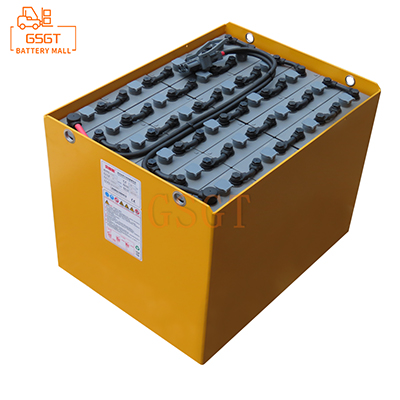Time:2025-03-08 12:05:30
Browse:300
As a widely used energy storage equipment, lead-acid batteries play a key role in many fields, from automobile start-up to electric energy storage system, the stability of its performance is directly related to the normal operation of the equipment. In the use of lead-acid batteries, charging temperature is an important factor that has a significant impact on the charging effect but is often ignored.
Charging dilemma in low temperature environment
When the ambient temperature is below 0 ° C, the charging process of the lead-acid battery will encounter many challenges. At low temperatures, the viscosity of the electrolyte increases greatly, and the movement of ions in it becomes slow, as if it were struggling to move forward in a thick syrup. This results in a sharp decrease in the conductivity of the electrolyte and a significant increase in the internal resistance of the battery. According to Ohm's law, the increase of resistance means that the charging current will be greatly reduced at the same charging voltage. For example, when charging a 12V lead-acid battery at -10 ° C, its initial charging current may be reduced by more than 50% compared with that at room temperature (25 ° C).
The charging current is insufficient, and the chemical reaction rate inside the battery slows down. The lead dioxide on the positive plate is difficult to be fully reduced, and the lead on the negative plate cannot be efficiently converted into lead sulfate, which makes the battery unable to be fully charged within the specified time. What is more serious is that lead sulfate crystallization caused by insufficient charging is also easy to occur at low temperatures. The incomplete reaction of lead sulfate will form coarse crystals on the plate, which will not only block the micropores of the plate, further increase the internal resistance, but also make the active material fall off the plate, permanently damage the battery plate, and greatly shorten the service life of the battery. According to relevant studies, the cycle life of lead-acid batteries charged at low temperatures for a long time may be shortened by 30%-50%.
Charging risks in high temperature environments
Contrary to the low temperature environment, the high temperature environment is also not conducive to the charging of the lead-acid battery. When the ambient temperature exceeds 40 ° C, the chemical reaction rate inside the battery will be abnormally accelerated. During the charging process, the water decomposition reaction on the positive plate is intensified, producing a large amount of oxygen, and the negative plate will precipitate hydrogen. These gases accumulate inside the battery, and if they cannot be discharged in time, they will cause the pressure inside the battery to rise, which may lead to the serious consequences of battery shell expansion or even rupture.
High temperatures also accelerate the loss of water from the electrolyte. The decrease of moisture increases the concentration of sulfuric acid in the electrolyte, which will aggravate the corrosion of the plate and reduce the mechanical strength of the plate. At the same time, too high sulfuric acid concentration will also promote the plate surface to produce a dense lead sulfate film, hinder the normal electrochemical reaction, resulting in a decrease in battery capacity. Experimental data show that in a high temperature environment of 50 ° C continuous charging, the capacity of lead-acid batteries in just a few months may be reduced by 10%-20%. Moreover, the battery heats up seriously when charged at high temperature, forming a vicious cycle and further accelerating the deterioration of battery performance.
Optimal charging temperature range and countermeasures
The best charging temperature range of lead-acid batteries is usually between 20 ° C and 30 ° C. In this temperature range, the ionic migration rate of the electrolyte is moderate, the internal resistance of the battery is kept at a low level, and the chemical reaction during the charging process can be carried out efficiently and stably. At this time, the charging current can be maintained in the appropriate range, neither because the temperature is too low and too small, nor because the temperature is too high and will cause side reactions. The battery can fully absorb electrical energy, store chemical energy efficiently, and the loss of the plate can be controlled to a minimum, so as to ensure the service life and performance of the battery.
In order to cope with the influence of different temperature environments on the charging effect, a variety of temperature compensation measures are often used in practical applications. In low temperature environment, a charger with temperature compensation function can be used. This type of charger can automatically adjust the charging voltage according to the battery temperature, appropriately increase the voltage to compensate for the voltage drop caused by the increase of internal resistance, and ensure that the charging current is in a reasonable range. At the same time, thermal insulation measures can be taken on the battery, such as the use of thermal insulation cover or heating pad, to raise the battery temperature to the appropriate range to improve the charging effect. In the high temperature environment, strengthening ventilation and heat dissipation is the key. Exhaust fans and air conditioners can be installed in the charging area to lower the ambient temperature. Some high-end chargers also have overheating protection function, when the battery temperature is detected to be too high, automatically reduce the charging current or suspend charging, to avoid battery damage due to overheating.
The charging temperature of the lead-acid battery has a comprehensive and deep influence on the charging effect. Whether it is insufficient charge and plate damage caused by low temperature, or gas precipitation, water loss and plate corrosion caused by high temperature, it will seriously threaten the performance and life of the battery. Understanding and paying attention to the factors of charging temperature and adopting scientific and reasonable temperature compensation and control strategies are the key to ensuring the efficient and stable operation of lead-acid batteries and extending their service life, which is of great significance for giving full play to the application value of lead-acid batteries in various fields.

$3405

$480

$705

$1150

MESSAGE
Professional And Efficient
Security
Affordable Price
Professional Services